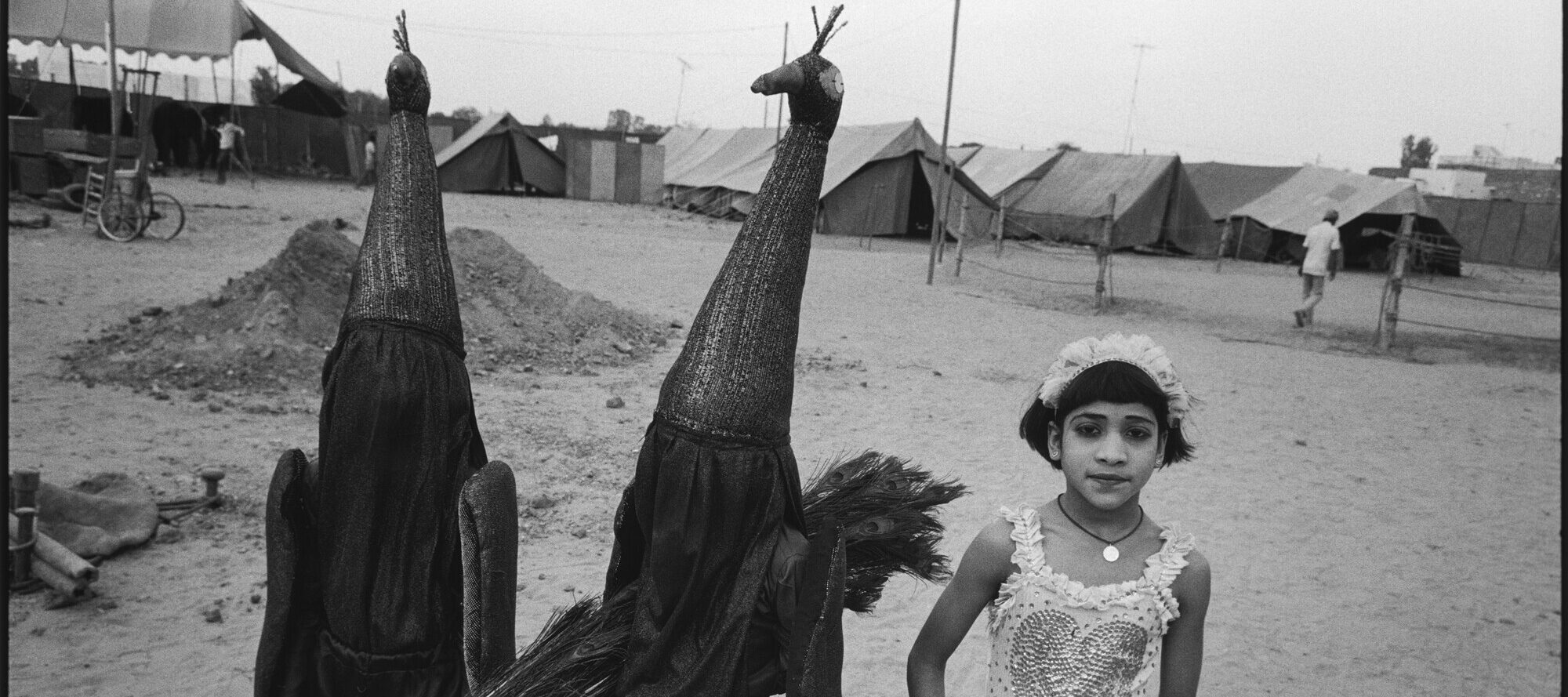NMWA presents a major exhibition of 125 black-and-white photographs by the world-renowned documentary photographer Mary Ellen Mark, on view from October 13, 1994, through January 16, 1995. The exhibition was coordinated by Marianne Fulton, chief curator of exhibitions and photographic collections at the International Museum of Photography at George Eastman House, with the generous support of the Professional Photography Division of Eastman Kodak.
Mary Ellen Mark: 25 Years, the first-ever retrospective of her work, is a selection of the artist’s most powerful images, including heroin addicts in London, blind students in Kyiv, and teenage runaways in Seattle. The exhibition also includes works from Mark’s most recent series, Indian Circus, which she photographed between 1989 and 1990 while touring India with 16 different circus troupes. The 25 photographs from this series reveal the fantastic texture of circus life. Mark’s approach to this project was indicative of the interactive style that has become the hallmark of her work. Close-up portraits of acrobats and animals take precedence over long shots of the camp. To capture the essence of her subject, she went into the ring itself, even standing in the lion cage as the animals roared and leaped around her. It is this personal approach that makes her photographs so evocative.
Ranging from studies of Mother Theresa’s Mission of Charity in Calcutta to the women’s maximum security ward of a mental institution in Oregon, the topics of Mark’s documentary projects have a broad and seemingly disparate range; yet, all share a common theme: the exploration of the human condition. Fascinated by the universality of human emotions, Mark endeavors to expose the drama of everyday life. Her photographs capture intensely personal, private moments and make them public. Interestingly, while Mark is often surrounded by wealthy and powerful representatives of the film industry, she rarely chooses to photograph them. In fact, she seldom focuses on people who live within the bounds of convention, seeking out instead those who inhabit the fringe.

Mary Ellen Mark, Tashara and Tanesha Reese, Twins Days Festival, Twinsburg, Ohio, 1998 (printed later); Gelatin silver print, 20 x 24 in.; National Museum of Women in the Arts, Gift of Robert and Kathi Steinke; © Mary Ellen Mark/The Mary Ellen Mark Foundation
